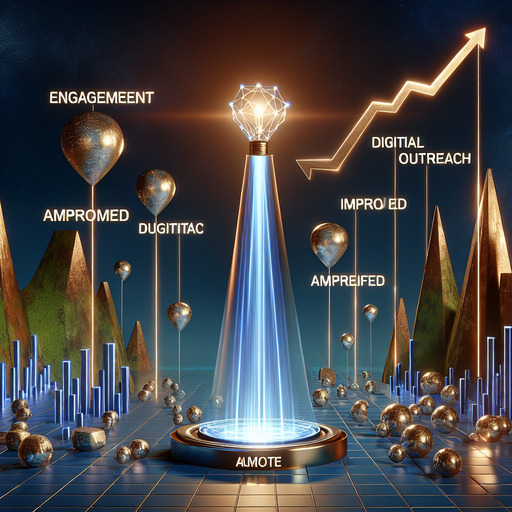
-
Table of Contents
Discover the most effective Non-Profit Marketing Strategies for 2024 and elevate your organization’s impact! Learn More
Introduction
In 2024, non-profit marketing strategies are evolving to meet the dynamic needs of a digital-first world. As non-profits strive to amplify their impact and reach broader audiences, they are increasingly leveraging data-driven insights, personalized engagement, and innovative digital tools. Key strategies include harnessing the power of social media platforms for storytelling and community building, utilizing email marketing for targeted donor communication, and implementing SEO and content marketing to enhance online visibility. Additionally, non-profits are focusing on transparency and authenticity to build trust and foster long-term relationships with supporters. By integrating these approaches, non-profits can effectively navigate the competitive landscape and drive meaningful change in their communities.
Top Non-Profit Marketing Strategies for 2024: Boosting Donor Engagement and Outreach
As we approach 2024, non-profit organizations must adapt their marketing strategies to stay relevant and effectively engage donors. The landscape of donor engagement and outreach is continually evolving, driven by technological advancements and shifting donor expectations. To remain competitive and impactful, non-profits need to implement innovative marketing strategies that resonate with their audience and foster deeper connections. One of the most significant trends in non-profit marketing is the increased emphasis on digital transformation. Leveraging digital tools and platforms can significantly enhance outreach efforts. For instance, social media remains a powerful tool for non-profits to connect with potential donors and volunteers. By creating compelling content and utilizing targeted advertising, organizations can reach a broader audience and drive engagement. Additionally, integrating storytelling into social media campaigns can humanize the cause, making it more relatable and inspiring action. Another critical strategy is the use of data analytics to inform marketing decisions. By analyzing donor data, non-profits can gain valuable insights into donor behavior and preferences. This information can be used to tailor marketing campaigns, ensuring they are more personalized and effective. For example, segmenting donors based on their giving history and interests allows organizations to send targeted messages that resonate with each group, increasing the likelihood of donations. Email marketing continues to be a vital component of non-profit marketing strategies. However, to stand out in crowded inboxes, non-profits must focus on creating engaging and relevant content. Personalization is key; addressing donors by their names and referencing their past contributions can make emails feel more personal and appreciated. Additionally, incorporating compelling visuals and clear calls-to-action can drive higher engagement rates. In 2024, non-profits should also consider the power of video marketing. Videos are highly engaging and can effectively convey the impact of an organization’s work. Whether it’s through short clips on social media or longer-form content on YouTube, videos can capture the attention of potential donors and communicate the organization’s mission in a dynamic way. Live streaming events, such as virtual fundraisers or behind-the-scenes tours, can also create a sense of immediacy and connection with the audience. Collaborations and partnerships are another effective strategy for non-profits looking to expand their reach. Partnering with like-minded organizations or influencers can amplify a non-profit’s message and attract new supporters. These collaborations can take various forms, from co-hosting events to cross-promoting content on social media. By leveraging the networks and credibility of partners, non-profits can enhance their visibility and credibility. Furthermore, non-profits should not overlook the importance of mobile optimization. With the increasing use of smartphones, ensuring that websites and donation platforms are mobile-friendly is crucial. A seamless mobile experience can significantly impact donor engagement and conversion rates. This includes having a responsive website design, easy-to-navigate donation forms, and mobile-optimized email campaigns. Lastly, transparency and accountability are paramount in building trust with donors. Non-profits should prioritize clear communication about how donations are used and the impact they have. Regularly updating donors on the progress of projects and financial transparency can foster trust and long-term support. In conclusion, as we move into 2024, non-profits must embrace a multifaceted approach to marketing that leverages digital tools, data analytics, personalized communication, and strategic partnerships. By staying attuned to donor preferences and technological trends, non-profits can enhance their outreach efforts and build stronger, more meaningful connections with their supporters.
Q&A
1. **What are effective non-profit marketing strategies for 2024?**
– **Digital Storytelling:** Utilize compelling narratives through videos, blogs, and social media to engage and inspire your audience.
– **Social Media Campaigns:** Leverage platforms like Instagram, Facebook, and TikTok to reach a broader audience with targeted campaigns.
– **Email Marketing:** Personalize email campaigns to keep donors and supporters informed and engaged.
– **SEO and Content Marketing:** Optimize your website and create valuable content to improve search engine rankings and attract organic traffic.
– **Influencer Partnerships:** Collaborate with influencers who align with your mission to expand your reach and credibility.
– **Virtual Events and Webinars:** Host online events to engage with your audience and provide valuable information or experiences.
– **Data-Driven Strategies:** Use analytics to track campaign performance and make informed decisions.
– **Community Building:** Foster a sense of community through online forums, social media groups, and local events.
– **Mobile Optimization:** Ensure your website and donation processes are mobile-friendly to accommodate the growing number of mobile users.
– **Corporate Partnerships:** Form strategic alliances with businesses to gain financial support and increase visibility.